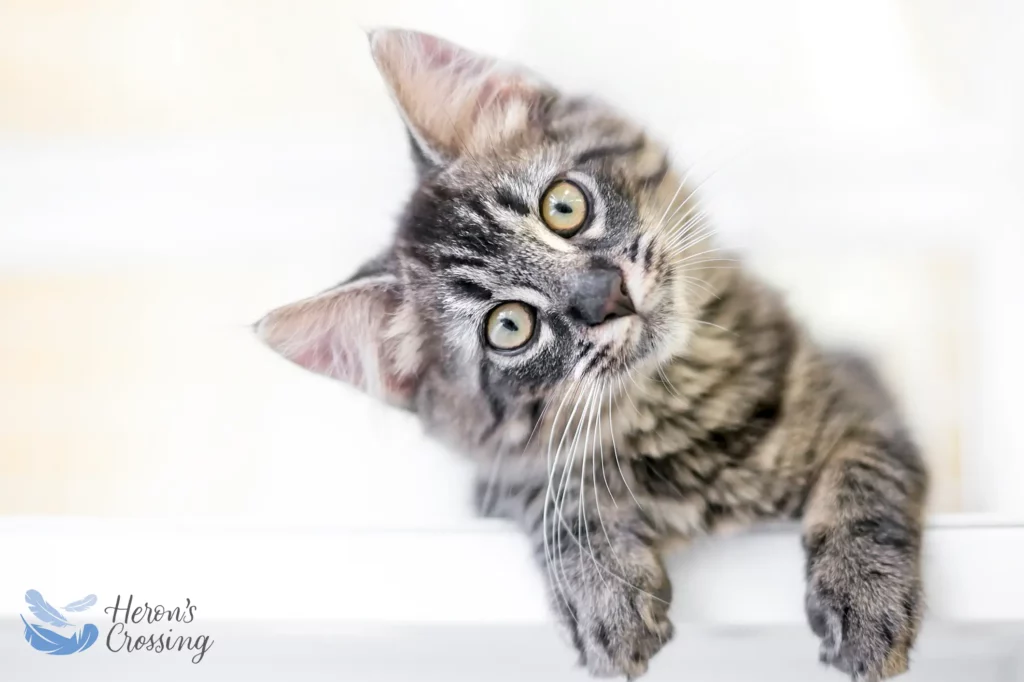If you brought home a watchdog to listen for burglars, you should have gotten a cat. Their hearing is far superior to both humans and dogs.
Although a cat’s low-end hearing is about the same as a human, at a frequency of 20Hz, they have a range of almost three times higher than people, and twice as high as dogs. It’s one of the broadest ranges in the animal kingdom.
Human hearing tops out at a maximum of 20,000 Hz. Dogs reach 40,000 Hz at best. Cats can hear up to 64,000 Hz or possibly 85kHz according to another source, high enough to detect even the tiniest squeaks and scratches of insects. This range also allows them to hear sounds four or five times farther away than humans. Do you wonder what the neighbors are doing? Your cat knows.
Why does your cat have this superpower? For cats, it’s literally been a jungle out there for them ancestrally. The sound of one crushed leaf may be all the warning a cat has that she is being stalked; it’s time to run. The tiny scratching sound of a bug means food and survival is nearby. Have you ever tried to quietly open something in the kitchen? Impossible. Your cat is at your feet in moments.
Like people, cats will suffer hearing loss from illness-related issues or old age. One type of cat is more commonly born with hearing problems: the blue-eyed white cat. That’s because a trait for deafness sits within the dominant W (white) gene. If a white cat has different-colored eyes, she may be hard of hearing only on the blue-eyed side.
There are an astounding 32 muscles in each ear. That’s twice as many as any dog, and a human has only six ear muscles.
The ear canal makes practically a 90 degree angle, shutting out more debris than than a dog’s ear, and it tapers into a smaller canal to intensify sound. When kittens are born, this canal remains closed for the first week. Scientists believe it is meant to protect their delicate ear mechanism as they go through the rigors of birth.
The quintessentially ‘cat’ upright, cupped ear flaps (‘pinnae’) act like a radio dish to collect and concentrate sound. The ear flaps can move independently, up to 180 degrees. They are also used to communicate long distances to friend and foe, like semaphore – either high and alert, low and wary, or twitching with interest or agitation.
You’ll notice, also, that your cat has a second, little skin flap called Henry’s Pocket (no one is sure why), tucked at the base of the outer edge of each ear flap. Bats, weasels and some dogs have this, too. No one is exactly sure what it does. Suggestions are that it acts like a gusset to help the ear flap to fold, or to concentrate higher ranges of sound, which would explain the connection with bats and weasels, two other creatures with phenomenal hearing. But now you know your cat comes with pockets.
A quick, but not entirely foolproof, method to determine whether your cat has a fever is to feel the warmth of the ear tips. It’s like putting a hand on your child’s forehead to check for fever.
Hearing testing should be a part of every cat’s annual vet exam. You can also perform a non-official check at home by snapping your fingers behind your cat’s head to make her turn around – if she feels like it.
Heron’s Crossing provides end-of-life care for pets in the Metro Atlanta area. In-home appointments with compassionate vets are available. If you’d prefer a home-like setting away from your home, our Decatur office is also available by appointment.

